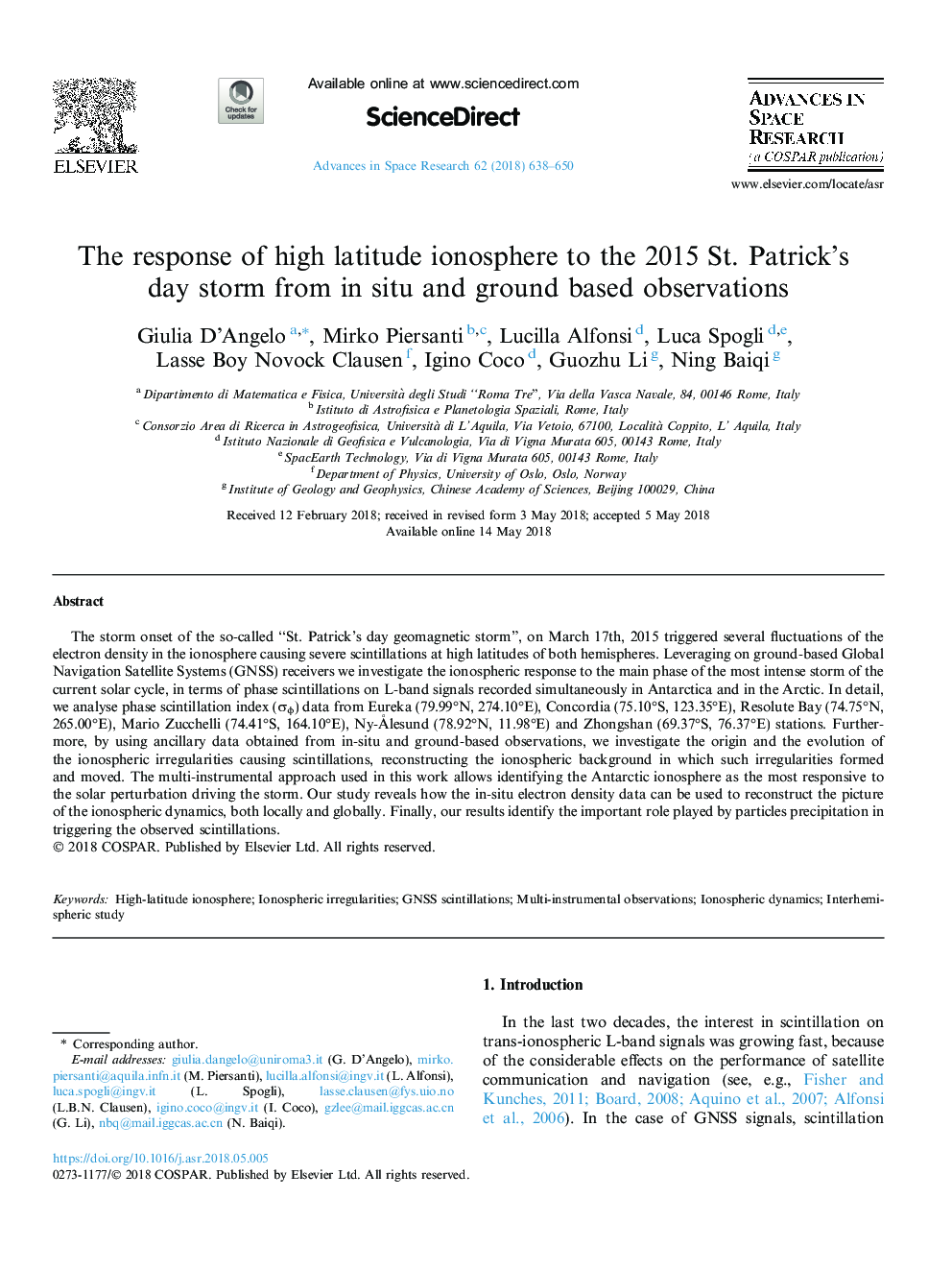| Article ID | Journal | Published Year | Pages | File Type |
|---|---|---|---|---|
| 8131730 | Advances in Space Research | 2018 | 13 Pages |
Abstract
The storm onset of the so-called “St. Patrick's day geomagnetic storm”, on March 17th, 2015 triggered several fluctuations of the electron density in the ionosphere causing severe scintillations at high latitudes of both hemispheres. Leveraging on ground-based Global Navigation Satellite Systems (GNSS) receivers we investigate the ionospheric response to the main phase of the most intense storm of the current solar cycle, in terms of phase scintillations on L-band signals recorded simultaneously in Antarctica and in the Arctic. In detail, we analyse phase scintillation index (ÏÏ) data from Eureka (79.99°N, 274.10°E), Concordia (75.10°S, 123.35°E), Resolute Bay (74.75°N, 265.00°E), Mario Zucchelli (74.41°S, 164.10°E), Ny-Ã
lesund (78.92°N, 11.98°E) and Zhongshan (69.37°S, 76.37°E) stations. Furthermore, by using ancillary data obtained from in-situ and ground-based observations, we investigate the origin and the evolution of the ionospheric irregularities causing scintillations, reconstructing the ionospheric background in which such irregularities formed and moved. The multi-instrumental approach used in this work allows identifying the Antarctic ionosphere as the most responsive to the solar perturbation driving the storm. Our study reveals how the in-situ electron density data can be used to reconstruct the picture of the ionospheric dynamics, both locally and globally. Finally, our results identify the important role played by particles precipitation in triggering the observed scintillations.
Related Topics
Physical Sciences and Engineering
Earth and Planetary Sciences
Space and Planetary Science
Authors
Giulia D'Angelo, Mirko Piersanti, Lucilla Alfonsi, Luca Spogli, Lasse Boy Novock Clausen, Igino Coco, Guozhu Li, Ning Baiqi,
